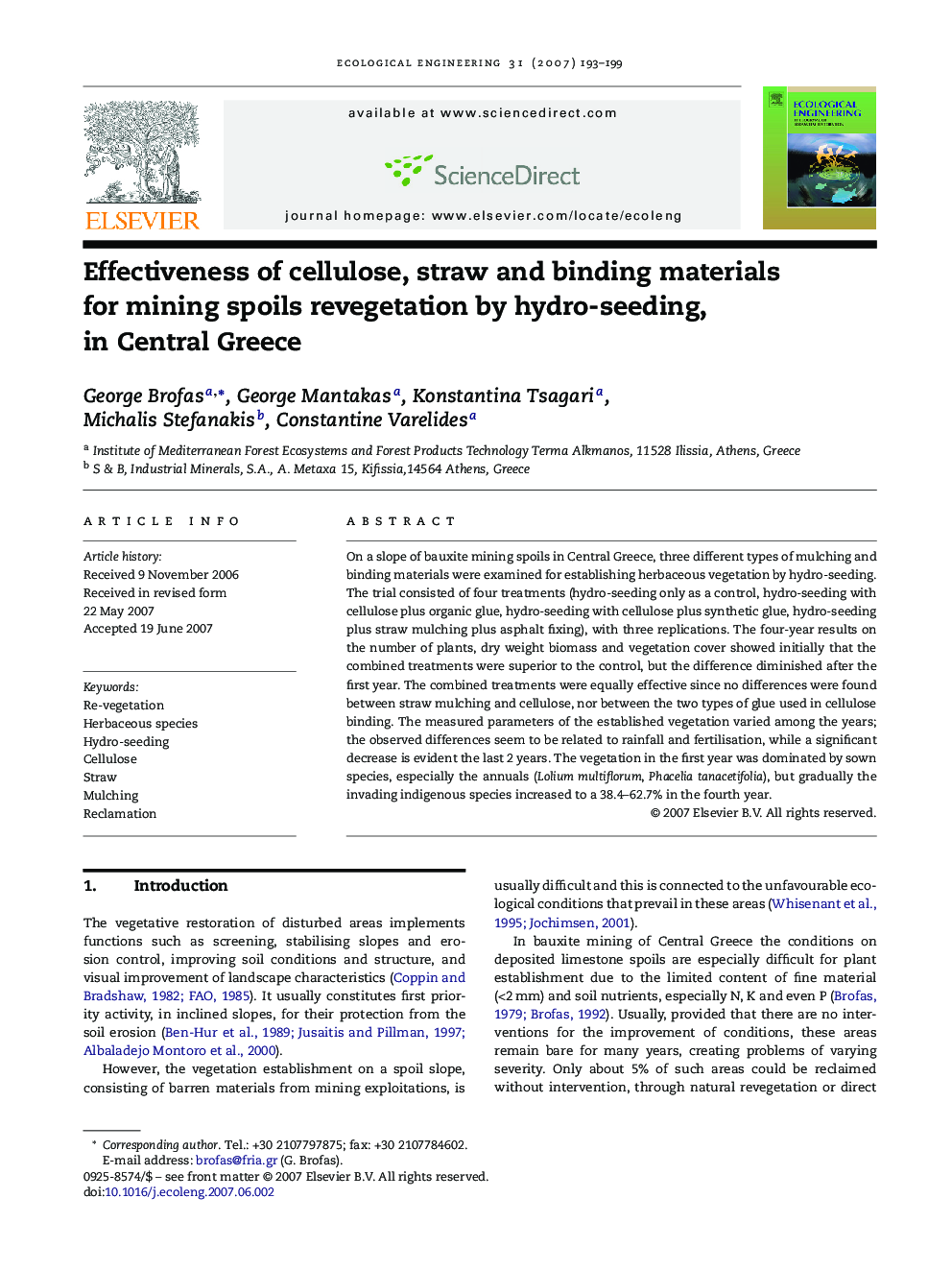| Article ID | Journal | Published Year | Pages | File Type |
|---|---|---|---|---|
| 4390924 | Ecological Engineering | 2007 | 7 Pages |
On a slope of bauxite mining spoils in Central Greece, three different types of mulching and binding materials were examined for establishing herbaceous vegetation by hydro-seeding. The trial consisted of four treatments (hydro-seeding only as a control, hydro-seeding with cellulose plus organic glue, hydro-seeding with cellulose plus synthetic glue, hydro-seeding plus straw mulching plus asphalt fixing), with three replications. The four-year results on the number of plants, dry weight biomass and vegetation cover showed initially that the combined treatments were superior to the control, but the difference diminished after the first year. The combined treatments were equally effective since no differences were found between straw mulching and cellulose, nor between the two types of glue used in cellulose binding. The measured parameters of the established vegetation varied among the years; the observed differences seem to be related to rainfall and fertilisation, while a significant decrease is evident the last 2 years. The vegetation in the first year was dominated by sown species, especially the annuals (Lolium multiflorum, Phacelia tanacetifolia), but gradually the invading indigenous species increased to a 38.4–62.7% in the fourth year.
